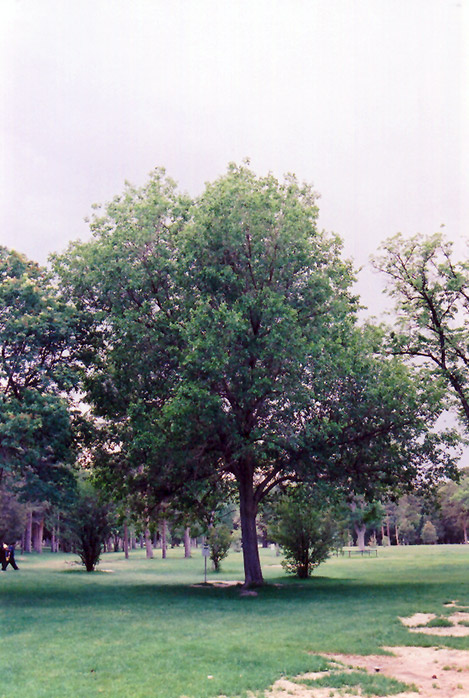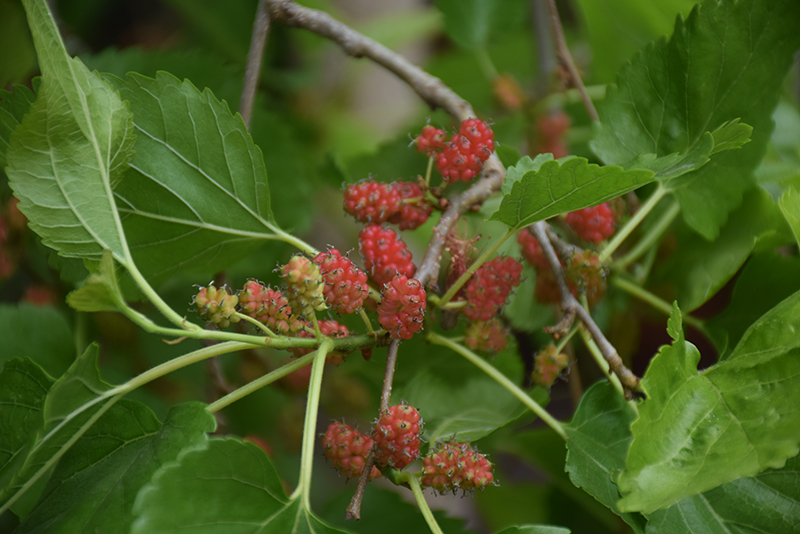Plant Finder
Height: 40 feet
Spread: 40 feet
Sunlight:
![]()
![]()
![]()
Hardiness Zone: 4a
Other Names: White Mulberry
Description:
One of the more vigorous and forgiving shade trees that will grow nearly anywhere, often used as a windbreak because of its durability and tolerance of dry conditions; prolific purple fruits can get messy and may proliferate around the yard
Ornamental Features
Common Mulberry has rich green deciduous foliage on a tree with a round habit of growth. The large pointy leaves turn yellow in fall. The red fruits are held in clusters in mid summer. The fruit can be messy if allowed to drop on the lawn or walkways, and may require occasional clean-up.
Landscape Attributes
Common Mulberry is a dense multi-stemmed deciduous tree with a more or less rounded form. Its relatively coarse texture can be used to stand it apart from other landscape plants with finer foliage.
This is a high maintenance tree that will require regular care and upkeep, and is best pruned in late winter once the threat of extreme cold has passed. It is a good choice for attracting birds to your yard. Gardeners should be aware of the following characteristic(s) that may warrant special consideration;
- Messy
Common Mulberry is recommended for the following landscape applications;
- Shade
- Windbreaks and Shelterbelts
Planting & Growing
Common Mulberry will grow to be about 40 feet tall at maturity, with a spread of 40 feet. It has a low canopy with a typical clearance of 2 feet from the ground, and should not be planted underneath power lines. It grows at a fast rate, and under ideal conditions can be expected to live for 40 years or more.
This tree performs well in both full sun and full shade. It is very adaptable to both dry and moist locations, and should do just fine under average home landscape conditions. It is considered to be drought-tolerant, and thus makes an ideal choice for xeriscaping or the moisture-conserving landscape. It is not particular as to soil type or pH, and is able to handle environmental salt. It is highly tolerant of urban pollution and will even thrive in inner city environments. This species is not originally from North America.





